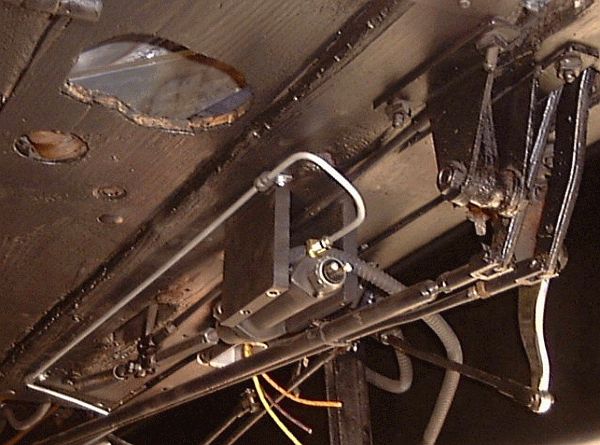|
Two steel mounting plates fasten the master cylinder under the carís frame. The master cylinder is mounted between the steel mounting plates. The plates are mounted to the underside of the wooden sub-floor of the car with bolts that go through the sub-floor. A metal plate above the sub-floor provides better support than the inch thick sub-floor boards. The mounting of the master cylinder takes advantage of the existing brake pedal linkage. At the right side of the photograph are the lever arms for the handbrake (longest, far right), engine hook-up pedal (center linkage with duel rods attached), and service (foot) brake (left, with rod attached near the sub-floor boards). A rod attached to the service brake travels over the top of the master cylinder to actuate the old mechanical brake linkage. The old mechanical brake linkage arm included extra holes and one is used for the rod (hexangular rod) that actuates the master cylinder plunger. A pair of springs is attached to the linkage arm (original springs) to return the brake pedal after it is pressed. The hydraulic line to the wheel cylinders is routed along the sub-floor boards to the rear of the car. A "T" splits the hydraulic fluid to both rear wheel cylinders. A short length of flexible brake hose connects each wheel cylinder to the steel brake line to allow for the spring action movement of the axle with respect to the body. After bleeding the brake lines and installing the exterior contracting brake bands the wheels were mounted and the conversion was complete. Hydraulic fluid is supplied to the master cylinder from a small reservoir located above the sub-floor. On the end of the master opposite the piston actuation rod is a brake light switch. Seen behind the master cylinder are three wires which will connect to the brake light switch to provide power for the brake light and tail light at the rear of the car. |
